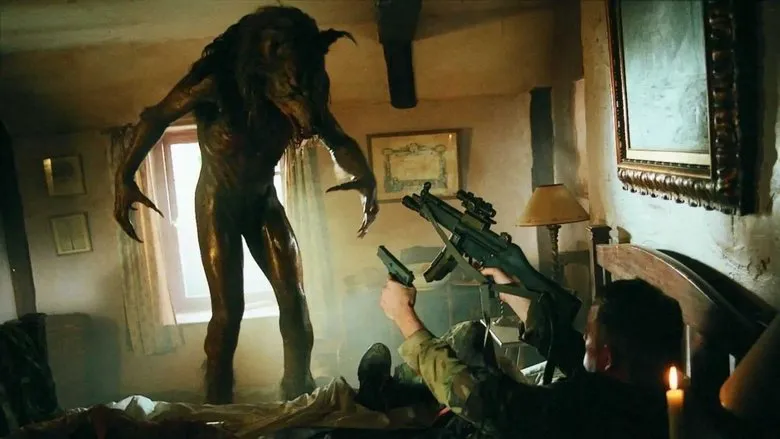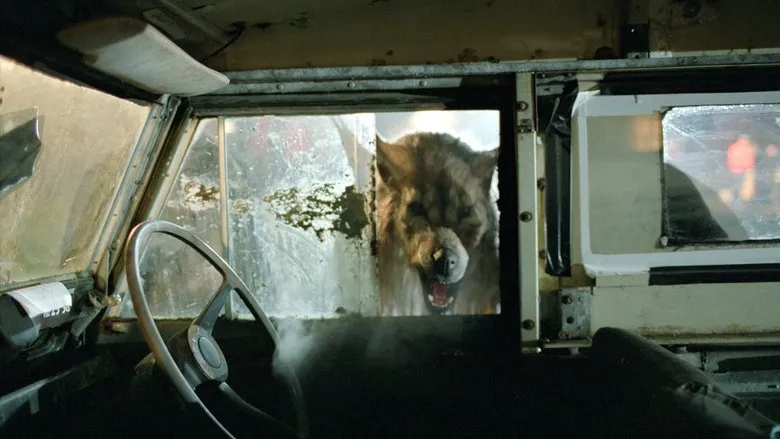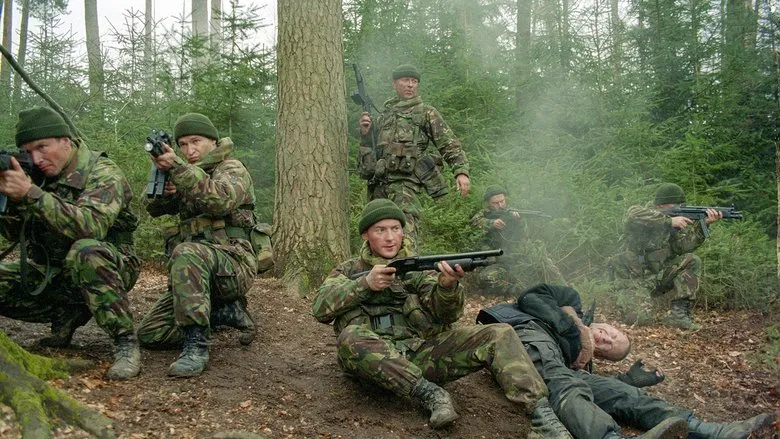“Dog Soldiers”: A B-Movie Howl of Delight
Like many a B-movie gem, Neil Marshall’s werewolf horror flick, “Dog Soldiers,” doesn’t pretend to be high art, but it delivers on its promise of visceral thrills. With a modest budget and minimal marketing, the film relies on its raw energy and practical effects to win over audiences. Free from the constraints of auteur expectations or politically correct studio meddling, “Dog Soldiers” achieves the rare feat of exceeding expectations, even garnering awards at genre festivals. In many ways, it’s a far more engaging watch than bigger-budget, more pretentious fare like M. Night Shyamalan’s “Signs.”

The film opens with a young couple seeking intimacy in a tent beside an autumnal stream in the remote Scottish Highlands. As the man anticipates pleasure, a different kind of anticipation lurks outside the tent. The wife’s screams, the husband’s blood-splattered trousers, and a chilling silence follow. Meanwhile, elsewhere in the Highlands, a figure in camouflage is pursued through the woods by ferocious dogs and shadowy pursuers. He’s no deserter, but a Special Forces recruit undergoing a brutal test. Ordered to kill one of the dogs without reason, he refuses, enduring a beating rather than compromising his principles.
The scene shifts to a squad of British soldiers, led by the affable Sergeant Wells (Sean Pertwee), being dropped into the same Highlands where the couple met their gruesome end. Among them is Cooper (Kevin McKidd), the principled recruit from the earlier scene, now participating in routine exercises. Unbeknownst to them, a Special Forces unit, led by the ruthless Captain Ryan (Liam Cunningham), is covertly observing their every move. As night falls, the soldiers share stories around the campfire, their camaraderie punctuated by a sudden, jarring intrusion: the carcass of a mutilated cow crashes into their midst.

Carnage in the Highlands
Confusion reigns as something unseen stalks the soldiers. One of them, impaled on a branch in a panic, becomes the next victim, reduced to a bloody stain in seconds. Sergeant Wells suffers a similar fate, his abdomen ripped open, but his men refuse to leave him behind. They attempt to patch him up, only to encounter a mysterious woman named Megan (Emma Cleasby), who offers them refuge in a nearby cottage. With no means of communication, they must survive until dawn. This is just the first act, setting the stage for a relentless hour of terror.
The film doles out just enough information to keep the audience engaged, posing questions about the creatures, their origins, and their motives. Unlike many horror films, “Dog Soldiers” grounds its supernatural elements in a gritty realism. The soldiers’ initial skepticism about the existence of werewolves forces the film to provide increasingly detailed explanations, skillfully woven into the otherwise sparse narrative. By balancing the fantastical with the practical, the film transcends mere gore, offering a context that elevates the horror.
More Than Just Blood and Guts
Beyond the (slightly dated) CGI werewolves, the film captures the atmosphere of the Scottish Highlands, with its windswept hills, dense forests, and palpable sense of isolation. The military uniforms, the dwindling ammunition, the ever-present threat of betrayal, and the sharp dialogue all contribute to the film’s grounded feel.

Beneath the surface of the genre tropes lies a subtle critique of unchecked rationalism. The film’s emphasis on character and morality, rather than pure horror, creates a surprisingly compelling gothic allegory for the modern subconscious. “Dog Soldiers” reminds us that even in the face of unimaginable terror, certain values endure. You simply can’t go around killing dogs, especially for no reason. While “Dog Soldiers” is undeniably a B-movie, it’s a well-crafted one, a testament to the enduring appeal of practical effects, strong characters, and a healthy dose of British wit. It stands its ground, a reliable and entertaining horror experience.